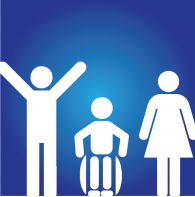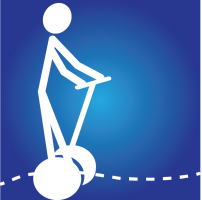Post stroke recovery– The ideal rehabilitation program: Up to 75% of stroke survivors have upper limb impairments that make everyday tasks like grasping a cup or utensil difficult. Many of these individuals become reluctant to use their affected limb in daily activities (called “learned non-use”). This can be detrimental to their long-term health, since reduced arm use has been associated with consequences such as decreased strength and bone density. Continue reading
Blog Archives: SCI
The costs of autonomic dysreflexia for people with SCI
| 0 commentsWhat is Autonomic Dysreflexia (AD)? AD is a life-threatening condition that can develop as a common secondary condition for people with spinal cord injuries. It is triggered by an overstimulation of the autonomic nervous system—the system responsible for all unconscious bodily functions such as the heart control and breathing. Continue reading
The effects of personalizing assistive technology
| 4 commentsWhat is assistive technology? With today’s aging population, there is a significant increase in the number of older adults experiencing physical disabilities and limitations in mobility. Assistive technology (AT) can be very beneficial to these individuals in promoting participation in daily life. Continue reading

How does fatigue affect participation in the community?
| 0 commentsAllie Donaldson & Otto Tam Edited by Ana-Maria Oproescu This is a summary of a research study conducted by ICORD researchers Dr. Bita Imam, Dr. William Miller, Dr. Hugh Anton, Dr. Susan Forwell, and Dr. Andrea Townson. Click here to Read More…
Using robot-applied resistance in walking rehabilitation
| 0 commentsAdrian Cheng, Lia Yu, Ana-Maria Oproescu This is a summary of a research study done by Dr. Tania Lam and colleagues at ICORD. Dr. Lam’s research interests are focused on human walking and its relationship with the nervous system. Click Read More…
Drug and cell therapies for SCI
| 0 commentsAna-Maria Oproescu and Victoria McCann This is a summary of a literature review which combines the findings of many individual studies about drug and cell therapies for SCI and discusses the major developments and challenges in these areas of research. Read More…
Progression of cardiovascular impairments after spinal cord injury
| 4 commentsLisa Liu This is a summary of a research study done by Dr. Christopher West and his colleagues at ICORD. Dr. West’s research interests are focussed on understanding cardiovascular adaptations after spinal cord injury, and the benefits of exercise to Read More…
Power wheelchairs in the community: wheelchair choices of older adults
| 0 commentsBryan Ng Original Article: This is a summary of a paper published by researchers in the Department of Occupational Science and Occupational Therapy in the University of British Columbia, including ICORD researcher Dr. Ben Mortenson. Mortenson, W. Hammell, K. Luts, Read More…

Investigation on Spasticity and Standing
| 1 commentLynda Bennet Original article: Sadeghi M, McIvor J, Finlayson, H, Sawatzky B. Static standing, dynamic standing and spasticity in individuals with spinal cord. Spinal Cord, 2015, September [ doi: 10.1038/sc.2015.160]. Find the original article here Have a spinal cord injury and experiencing Read More…
Boosting in Athletes with Spinal Cord Injury: Implications for Sports
| 0 commentsBy Martin Keung Dr. Krassioukov is a principal investigator at ICORD. The Krassiokov laboratory researches autonomic dysreflexia, cardiovascular health, locomotor training, physical medicine and sexual rehabilitation in persons with SCI. Gee, C. West, and A.Krassioukov. (2015). Boosting in Elite Athletes with Spinal Cord Injury: Read More…

